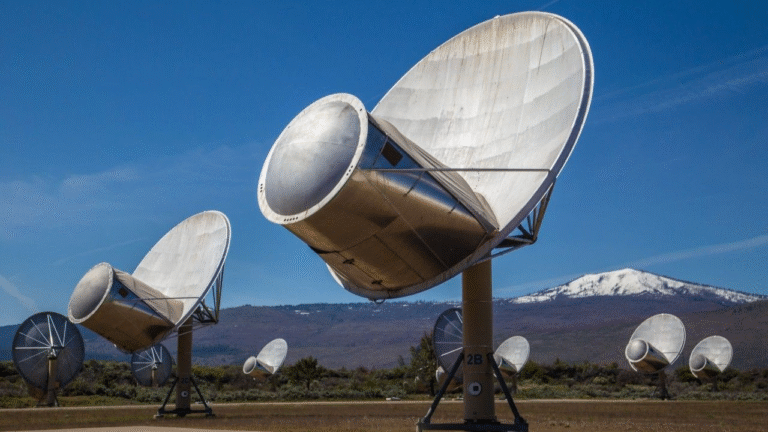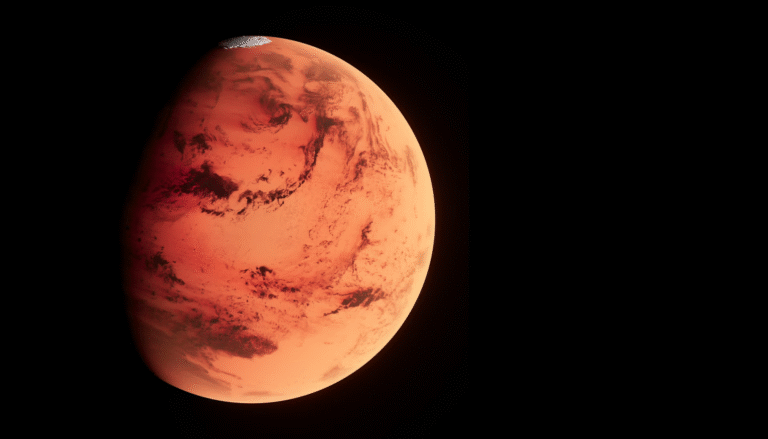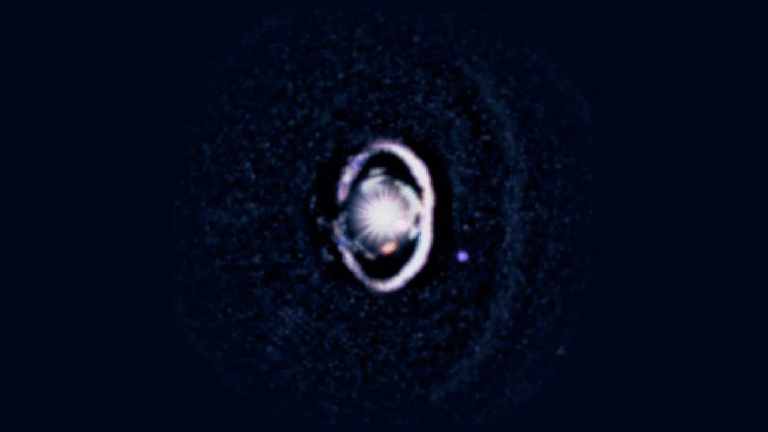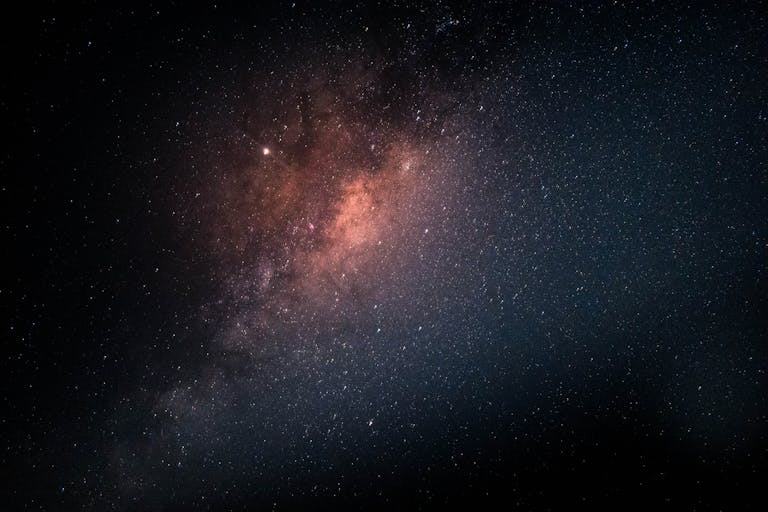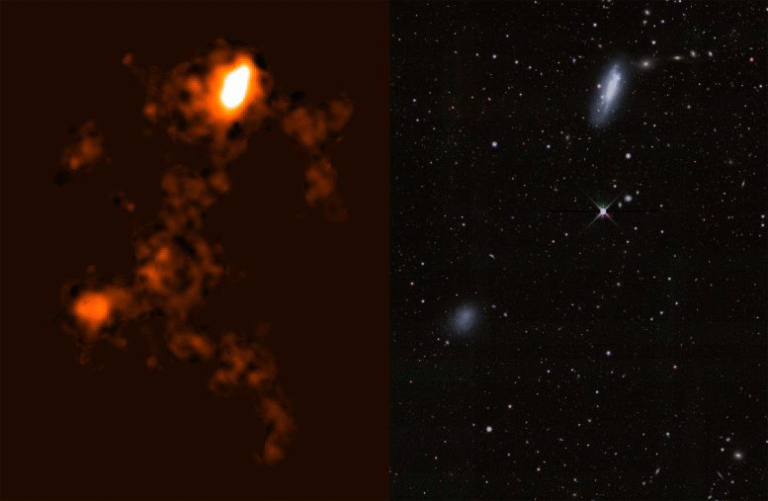Spiral Galaxy NGC 7456 Bursts With Star Formation and Black Hole Power
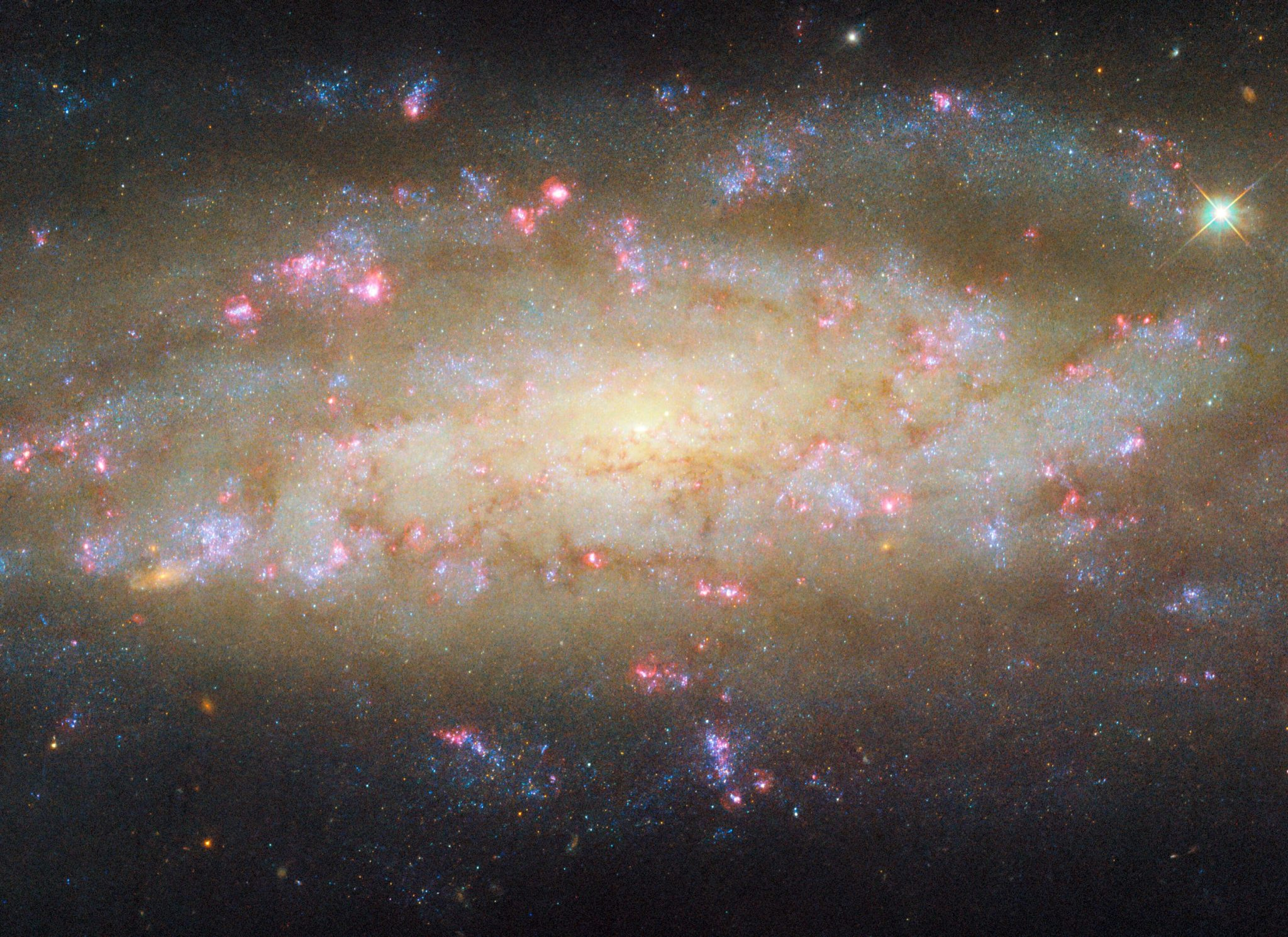
The spiral galaxy NGC 7456 may look like an ordinary member of the countless galaxies scattered across the cosmos, but astronomers are finding that it has far more going on beneath the surface.
New observations from the Hubble Space Telescope and ESA’s XMM-Newton X-ray observatory reveal a galaxy full of active star birth, mysterious ultraluminous X-ray sources (ULXs), and even an energetic central black hole. Located about 51 million light-years away in the constellation Grus (the Crane), this galaxy is becoming a valuable laboratory for studying how galaxies evolve, how stars are born, and how black holes impact their surroundings.
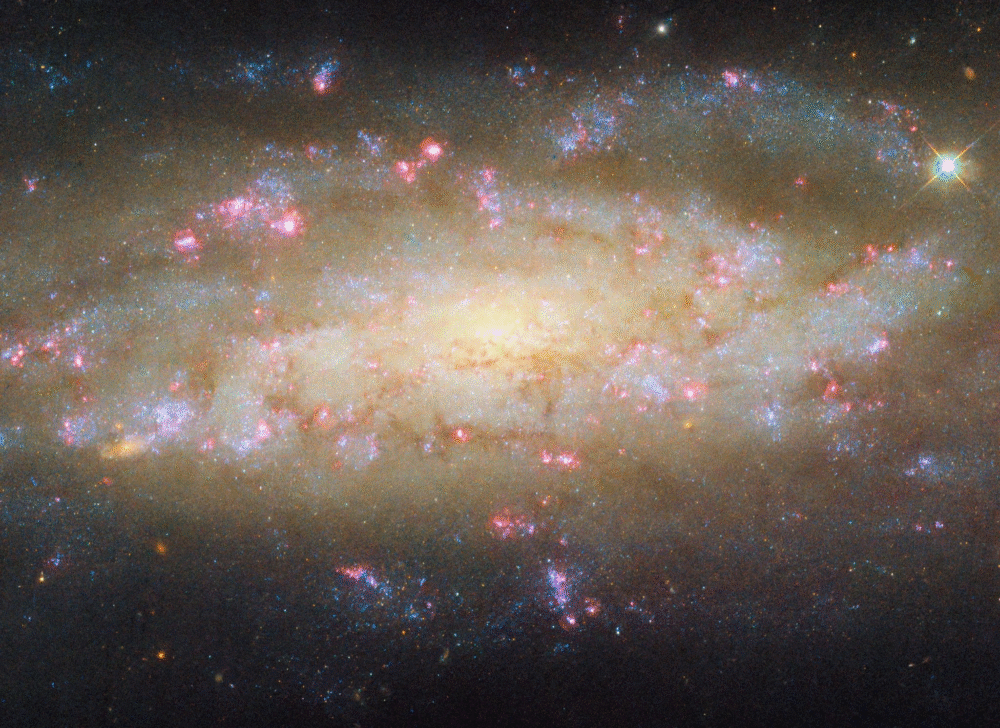
Location and Basic Characteristics
NGC 7456 is a spiral galaxy classified as SA(s)cd or SAc, meaning its spiral arms are somewhat loosely wound and irregular in structure. The galaxy lies in the constellation Grus, a southern sky constellation sometimes called “the Crane.”
It shines at an apparent magnitude of about 12.8, which makes it far too faint for the naked eye but visible in moderate-sized amateur telescopes under dark skies. Its estimated diameter ranges between 35,000 and 117,000 light-years, depending on the method of measurement, which makes it comparable in size to our own Milky Way Galaxy.
The galaxy was first observed on September 4, 1834, by John Herschel, one of the great pioneers of observational astronomy. Today, with modern observatories, astronomers are uncovering the finer details that Herschel could never have imagined.
NGC 7456 is also part of the LDC 1547 galaxy group, which contains around 16 other large galaxies. Studying it in the context of its galactic neighbors helps researchers understand how group environments influence star formation and black hole activity.
What Hubble Saw: Star-Forming Regions
When astronomers point the Hubble Space Telescope at NGC 7456, they see much more than a simple spiral structure. Its spiral arms are uneven, clumpy, and dust-filled, with dark lanes of material cutting across the starlight.
Scattered throughout the galaxy are brilliant pink regions, which are glowing H II regions — giant clouds of hydrogen gas lit up by the intense ultraviolet radiation from newly formed, massive stars. The ultraviolet light excites the hydrogen gas, which then emits the distinctive red glow of ionized hydrogen.
These pink star nurseries are clear evidence that NGC 7456 is undergoing active star formation, and not just in a small portion of the galaxy. The activity is widespread, with numerous patches of young, hot stars igniting across its spiral arms.
Extreme Powerhouses: Ultraluminous X-Ray Sources
One of the most fascinating discoveries in NGC 7456 is the detection of ultraluminous X-ray sources (ULXs). These are compact objects — usually black holes or neutron stars — that emit X-rays at levels far higher than expected for their size.
Using ESA’s XMM-Newton X-ray observatory, astronomers have found up to five ULXs inside NGC 7456. Two of the most powerful, known as ULX-1 and ULX-2, reach luminosities on the order of 6–10 × 10³⁹ erg/s. For comparison, that is hundreds of times brighter in X-rays than typical stellar-mass black holes found in our galaxy.
What makes ULX-1 especially interesting is that it shows rapid flux variability — its brightness changes noticeably over timescales of hundreds to thousands of seconds. This variability is a sign of turbulent accretion, where matter spirals onto the compact object at extreme rates.
Spectral studies of ULX-1 also reveal a possible iron Kα emission line, a signature produced when X-rays interact with iron atoms in the surrounding material. On top of that, astronomers detected a soft X-ray lag of about 1300 seconds, meaning different energies of X-rays arrive at slightly different times. This gives important clues about the geometry of the system and the physics of the accretion disk.
ULXs are thought to represent super-Eddington accretion, where compact objects pull in matter at rates exceeding the classical limit for radiation pressure balance. Some ULXs have been confirmed to be powered by neutron stars, while others may harbor stellar-mass black holes or even the elusive intermediate-mass black holes. The fact that NGC 7456 hosts several of them makes it a rich hunting ground for further study.
A Lively Core: Signs of an Active Black Hole
The activity in NGC 7456 is not confined to its spiral arms. The central region of the galaxy is unusually bright and energetic, a sign that its supermassive black hole is active.
Galaxies with active galactic nuclei (AGN) are of particular interest because they demonstrate how a black hole can influence its host galaxy. As gas and dust fall toward the black hole, they heat up to extreme temperatures and emit large amounts of energy across the spectrum — from radio waves to X-rays. This process not only lights up the galactic center but can also drive powerful outflows that affect star formation in the rest of the galaxy.
In NGC 7456, astronomers see this combination of an AGN plus active star formation. That interplay raises important questions: does the black hole feed on the same gas that fuels new stars, or does its energy output regulate and possibly suppress star formation? Galaxies like NGC 7456 help scientists investigate those dynamics.
Why NGC 7456 Matters to Astronomers
NGC 7456 is particularly valuable for several reasons:
- Proximity – At just over 51 million light-years away, it is close enough for telescopes like Hubble and XMM-Newton to resolve individual features.
- Rich in star formation – Its patchy spiral arms are dotted with star-forming regions that reveal how galaxies continually recycle gas into new generations of stars.
- Multiple ULXs – With several ultraluminous X-ray sources in a single galaxy, astronomers can perform comparative studies and test competing models of compact object accretion.
- Active nucleus plus starburst – Few galaxies combine a lively central black hole with widespread star birth, making NGC 7456 an excellent test case for studying galactic feedback mechanisms.
- Multiwavelength synergy – Observations at visible, ultraviolet, infrared, and X-ray wavelengths create a complete picture of its processes.
Background: What Are Spiral Galaxies?
Since NGC 7456 is a spiral galaxy, it’s useful to review what that means. Spiral galaxies are among the most common types in the universe, making up about 70% of all observed galaxies. They are characterized by a central bulge, a flat disk with spiral arms, and often a surrounding halo of older stars and globular clusters.
The Milky Way, our home galaxy, is also a spiral, though more tightly wound than NGC 7456. Spirals are often the sites of active star formation, particularly in their arms, because these regions contain large amounts of cold gas and dust.
NGC 7456’s irregular spiral structure is an example of how not all spirals are neat and symmetric. Environmental effects, past interactions with other galaxies, or internal instabilities can lead to patchy, uneven arms.
Background: What Are Ultraluminous X-Ray Sources?
The ULXs in NGC 7456 deserve a closer look. By definition, ULXs are point-like, off-nuclear X-ray sources that exceed the luminosity expected for stellar-mass black holes accreting at the Eddington limit. Their exact nature has been debated for years.
Some ULXs have been found to be neutron stars with strong magnetic fields, where the magnetic field channels accretion in such a way that the radiation can escape in columns, allowing luminosities above the standard Eddington limit. Others may indeed be black holes accreting at extreme rates.
The possibility that some ULXs represent intermediate-mass black holes (IMBHs) — with masses between stellar-mass and supermassive — is especially exciting. IMBHs are thought to be the “missing link” in black hole populations, and galaxies like NGC 7456 could help astronomers find them.
Background: What Are Active Galactic Nuclei?
An active galactic nucleus (AGN) is a small region at the center of some galaxies that is brighter than the combined light of all the stars in the galaxy. This extraordinary luminosity comes from the accretion of material onto a supermassive black hole.
AGN can appear in different forms — quasars, Seyfert galaxies, blazars, and radio galaxies — depending on the amount of energy produced and the orientation of the system relative to Earth.
In galaxies like NGC 7456, the AGN is not as powerful as a quasar but still energetic enough to affect its environment. This dual presence of AGN activity plus widespread star formation makes it an excellent case study for understanding co-evolution of galaxies and black holes.
Conclusion
NGC 7456 is far from “ordinary.” With its starburst regions, ultraluminous X-ray sources, and an active supermassive black hole, it is a galaxy filled with both beauty and extreme astrophysical processes. Observations across multiple wavelengths are revealing how galaxies live, evolve, and interact with the compact objects at their hearts.
For astronomers, NGC 7456 is not just another spiral galaxy — it is a cosmic laboratory where the forces of star birth and black hole power are on full display.
Research Reference:
Unveiling the ULX population in NGC 7456 with XMM-Newton
